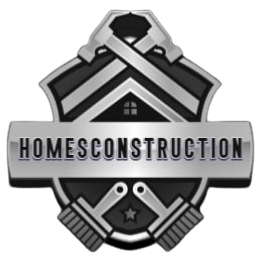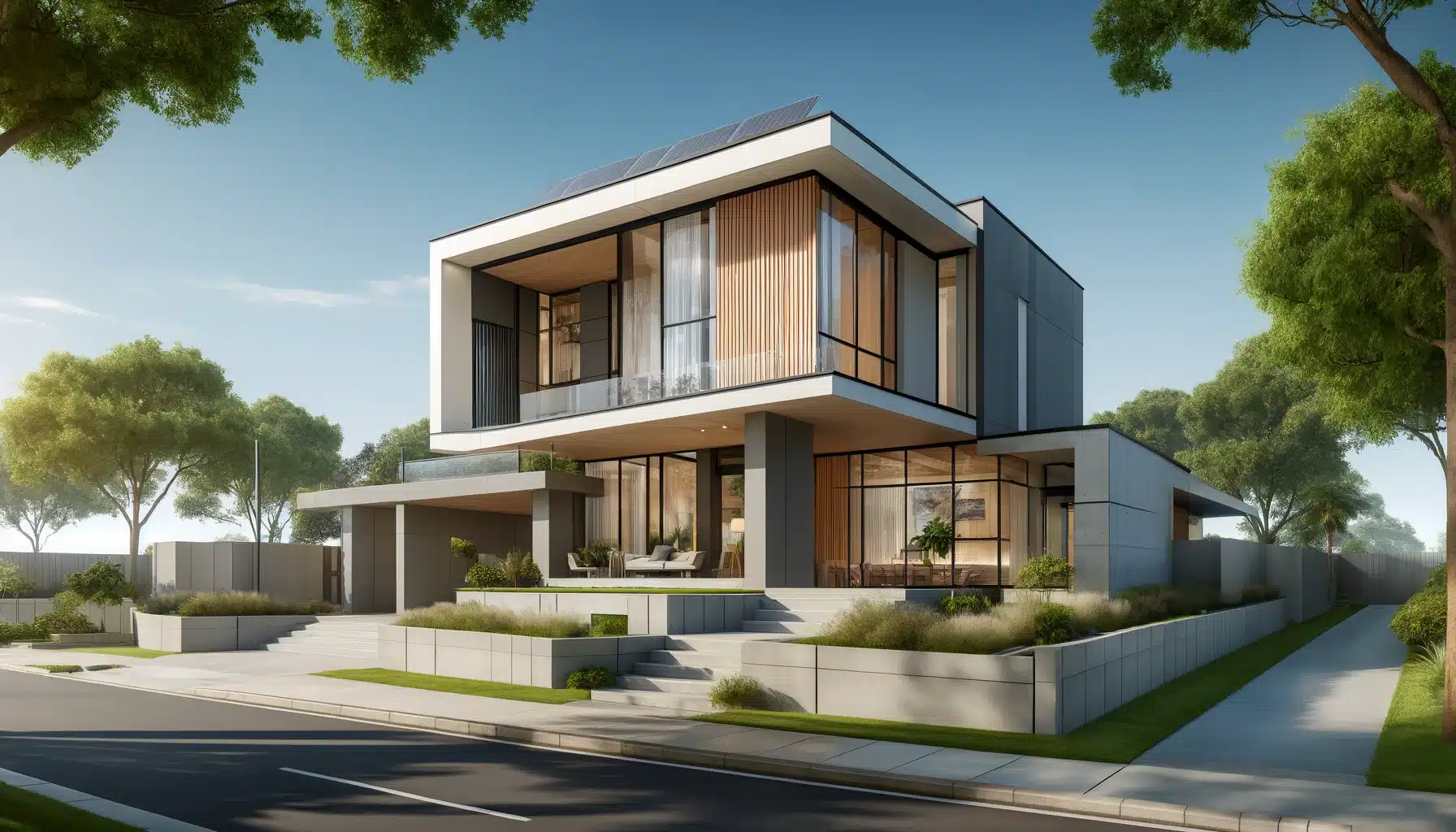Modern house elevations represent a critical aspect of contemporary residential architecture, reflecting both aesthetic preferences and functional considerations. Elevations are the external faces of a building, encompassing the design, materials, and overall appearance of the home. This article explores the principles, trends, benefits, challenges, and future prospects of modern house elevations, highlighting their significance in shaping the visual and functional identity of contemporary homes.
Principles of Modern House Elevations
Modern house elevations are characterized by several key principles that define their unique style and functionality:
- Simplicity and Clean Lines: Modern elevations emphasize simplicity, with clean, straight lines and minimalistic designs. This aesthetic avoids unnecessary ornamentation, focusing instead on form and function.
- Integration with Surroundings: A core principle of modern design is the seamless integration of the house with its natural surroundings. This often involves large windows, open spaces, and the use of natural materials that blend with the landscape.
- Functionality: Every element of a modern elevation serves a purpose. Functional considerations, such as energy efficiency, durability, and ease of maintenance, are paramount.
- Sustainable Materials: Modern elevations often incorporate sustainable materials, such as recycled metal, reclaimed wood, and eco-friendly composites, reflecting a commitment to environmental responsibility.
- Technological Integration: The use of advanced technologies, such as smart glass, solar panels, and energy-efficient lighting, is common in modern house elevations, enhancing both functionality and sustainability.
Trends in Modern House Elevations
Several trends have emerged in recent years, reflecting broader changes in architectural styles, technological advancements, and environmental considerations:
- Minimalism: Minimalist designs continue to dominate, characterized by clean lines, neutral color palettes, and a focus on simplicity and functionality. This trend emphasizes the beauty of simplicity and the importance of uncluttered spaces.
- Glass and Transparency: Extensive use of glass is a hallmark of modern elevations, creating a sense of openness and connectivity with the outdoors. Floor-to-ceiling windows, glass walls, and sliding glass doors are common features.
- Flat and Low-Pitched Roofs: Modern house elevations often feature flat or low-pitched roofs, contributing to the sleek, streamlined appearance of the home. These roofs can also accommodate green roofs or solar panels, enhancing sustainability.
- Mixed Materials: The use of a mix of materials, such as wood, metal, concrete, and glass, adds texture and visual interest to modern elevations. This trend allows for creative expression and customization.
- Asymmetry and Geometric Shapes: Modern designs frequently incorporate asymmetrical layouts and geometric shapes, creating dynamic and visually striking elevations. These designs break away from traditional symmetry, offering a fresh and contemporary look.
- Outdoor Living Spaces: Integrating outdoor living spaces, such as patios, balconies, and terraces, is a popular trend. These spaces enhance the functionality of the home and promote a connection with nature.
Benefits of Modern House Elevations
Investing in modern house elevations offers numerous benefits, encompassing aesthetic, functional, and environmental dimensions:
- Enhanced Curb Appeal: Modern elevations create a striking and contemporary appearance, significantly enhancing the curb appeal of a home. This can increase property value and attract potential buyers.
- Energy Efficiency: Many modern designs incorporate energy-efficient features, such as insulated glass, solar panels, and green roofs. These features reduce energy consumption and lower utility bills.
- Sustainability: The use of sustainable materials and technologies in modern elevations contributes to environmental conservation and reduces the carbon footprint of the home.
- Natural Light and Ventilation: Large windows and open designs allow for abundant natural light and ventilation, creating a healthier and more comfortable living environment.
- Flexibility and Customization: Modern designs offer flexibility and customization, allowing homeowners to tailor the appearance and functionality of their home to their specific needs and preferences.
- Integration with Nature: Modern elevations often emphasize a connection with nature, incorporating elements such as large windows, outdoor living spaces, and natural materials. This promotes a sense of well-being and harmony with the environment.
Challenges in Modern House Elevations
Despite their many benefits, modern house elevations also present several challenges:
- Cost: The use of high-quality materials and advanced technologies can be expensive. Homeowners may need to balance the desire for modern aesthetics with budget constraints.
- Maintenance: Some modern materials and designs require specialized maintenance. For example, large glass surfaces need regular cleaning, and flat roofs may need more attention to ensure proper drainage and prevent leaks.
- Building Codes and Regulations: Navigating building codes and regulations can be complex, especially for innovative or unconventional designs. Compliance with local regulations is essential and can sometimes limit design choices.
- Climate Considerations: Modern designs often feature large windows and open spaces, which can impact energy efficiency in extreme climates. Proper insulation and climate-appropriate design are crucial to maintaining comfort and efficiency.
- Availability of Materials: Access to certain sustainable or high-tech materials can be limited, depending on the location. This can impact the feasibility and cost of modern elevations.
Future Prospects of Modern House Elevations
The future of modern house elevations is shaped by evolving technologies, environmental considerations, and changing lifestyle preferences:
- Advanced Materials and Technologies: The development of new materials, such as smart glass, aerogels, and advanced composites, will continue to enhance the functionality and aesthetics of modern elevations. These materials offer improved energy efficiency, durability, and design flexibility.
- Sustainable Design: As environmental awareness grows, sustainable design practices will become increasingly important. This includes the use of renewable energy sources, green roofs, and sustainable building materials.
- Customization and Personalization: Advances in design software and manufacturing techniques will enable greater customization and personalization of modern house elevations. Homeowners will have more options to create unique and tailored designs.
- Integration of Smart Home Technology: The integration of smart home technology will continue to evolve, offering more sophisticated solutions for energy management, security, and comfort. This will enhance the functionality and convenience of modern homes.
- Resilience and Adaptability: Future designs will emphasize resilience and adaptability, incorporating features that allow homes to withstand extreme weather events and adapt to changing needs and conditions.
Conclusion
Modern house elevations are a dynamic and evolving aspect of contemporary residential architecture. By embracing principles of simplicity, functionality, sustainability, and technological integration, modern elevations offer numerous benefits, from enhanced curb appeal and energy efficiency to increased natural light and connectivity with nature. While challenges exist, the future of modern house elevations is promising, driven by advances in materials and technologies, a growing emphasis on sustainability, and the desire for personalized and adaptable living spaces. As we look ahead, modern house elevations will continue to shape the visual and functional identity of our homes, creating spaces that are not only beautiful and efficient but also reflective of our evolving lifestyles and values.

